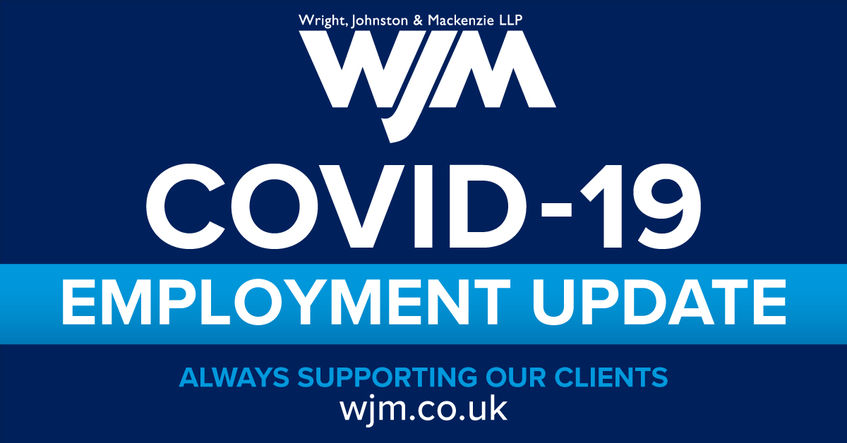Covid-19 Further Update: the Coronavirus Job Retention Scheme

An update to this article can be found here: https://www.wjm.co.uk/news/covid-19-further-update-the-coronavirus-job-retention-scheme-2
HMRC has published what is its fourth update on the Guidance to the Scheme and you can find that update here:
https://www.gov.uk/guidance/claim-for-wage-costs-through-the-coronavirus-job-retention-scheme?mc_cid=177bacbc11&mc_eid=6be6e51153
The principal change introduced by this update is that the requirement for employees having to be on the PAYE payroll as of 28 February 2020 has changed. That qualifying date has now altered to 19 March 2020 being the day before the Chancellor announced the Scheme. There is also a requirement that HMRC must have been notified on an RTI submission.
Here is a summary of the changes:
• You can only claim for furloughed employees that were on your PAYE payroll on or before 19 March 2020 and which were notified to HMRC on an RTI submission on or before 19 March. This means that an RTI submission notifying payment in respect of that employee to HMRC must have been made on or before 19 March. Employees who were employed as of 28 February 2020 and on the payroll (i.e. notified to HMRC on an RTI submission or on before 28 February) and who were made redundant or stopped working for the employer after that date and prior to 19 March, can also qualify for the Scheme if the employer re-employs them and puts them on furlough leave;
• If you made employees redundant, or they stopped working for you on or after 28 February 2020, you can re-employ them, put them on furlough and claim their wage through the Scheme. This applies to employees that were made redundant or stopped working for you after 28 February, even if you do not re-employ them until after 19 March2020. This applies as long as the employee was on your payroll as at 28 February and has been notified to HMRC on an RTI submission on or before 28 February. This means that an RTI submission notifying payment in respect of that employee must have been made or on before 28 February;
• If a TUPE transfer takes place after 19 March 2020, the transferee will be entitled to claim under the Scheme even although the incoming employees were not on the payroll as of 19 March. For transfers which took place before this date employers should be able to claim because the employees in question would be on the payroll by 19 March; and
• Employees who started unpaid leave after 28 February 2020 can be placed on furlough leave. Employees who went on unpaid leave prior to 28 February, for example by taking a sabbatical, cannot be placed on furlough leave until the date on which it was agreed they would return from unpaid leave.
The Treasury has also issued a Direction to HMRC under powers conferred by the Coronavirus Act 2020. This contains authority and instructions for making payments under the Scheme. Although amendments are possible, it is likely to be the definitive Guidance on how the Scheme works.
You can find the Direction here:
https://assets.publishing.service.gov.uk/government/uploads/system/uploads/attachment_data/file/879484/200414_CJRS_DIRECTION_-_33_FINAL_Signed.pdf
Here is a summary of the major changes and clarifications:-
• Employees who were employed on 19 March 2020 (previously 28 February 2020) are eligible for furlough leave, provided the employer has submitted the real time information payroll data by that date;
• The Scheme is not limited to those employees who would otherwise be made redundant. It applies to any who are furloughed “by reason of circumstances as the result of Coronavirus or Coronavirus disease”;
• A Director who is furloughed can only undertake work to fulfil a duty or other obligation arising from an Act of Parliament relating to the filing of Company Accounts or provision of other information relating to the administration of the Director’s Company. This is a very narrow interpretation of Directors’ duties;
• To claim furlough, the employer and the employee must have agreed in writing that the employee will cease all work. This is significant as the Guidance only requires notification. The Direction from the Treasury requires written agreement. This may mean that many employees who have already been furloughed may not fall within the meaning of the Scheme, principally because they have not entered a written agreement. Those of you who have used the WJM template letter and who have had it properly signed off by the employee will meet the requirements of the Directive;
• The amount of salary for the employee must disregard anything which is not “regular salary or wages”. This includes disregarding any performance related bonus or discretionary payments (including tips), any conditional payments (for example where a threshold must be met) and any non-financial benefits;
• The employer cannot claim for any salary which is “conditional on any matter”;
• The employer can claim for earnings which it “reasonably expects to be paid” to the employee. That would appear to include deferred earnings being earnings deferred until the Scheme pays out; and
• The Direction is completely silent on the subject of annual leave.
Please remember that we at WJM are here to help during this exceptionally difficult time, please don't hesitate to get in touch if there is anything you think we can help with.
For any advice in relation to any particular aspects of the above, please contact a member of the Wright, Johnston & Mackenzie Employment team: Liam Entwistle (lae@wjm.co.uk), Martin Stephen (mss@wjm.co.uk), Andrew Wilson (ajpw@wjm.co.uk) and John Grant (jg@wjm.co.uk)
The information contained in this newsletter is for general guidance only and represents our understanding of relevant law and practice as at April 2020. Wright, Johnston & Mackenzie LLP cannot be held responsible for any action taken or not taken in reliance upon the contents. Specific advice should be taken on any individual matter. Transmissions to or from our email system and calls to or from our offices may be monitored and/or recorded for regulatory purposes. Authorised and regulated by the Financial Conduct Authority. Registered office: 319 St Vincent Street, Glasgow, G2 5RZ. A limited liability partnership registered in Scotland, number SO 300336.




